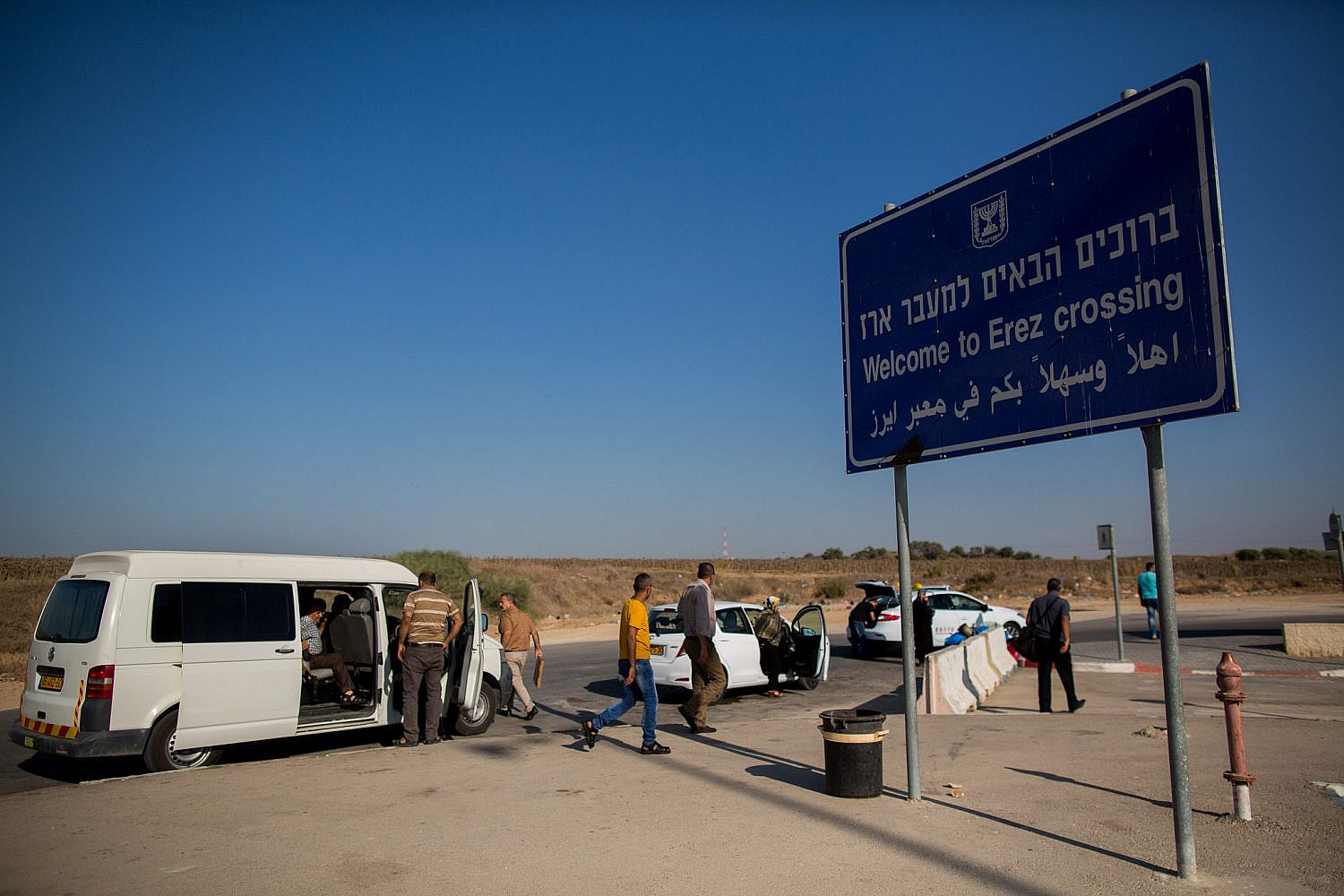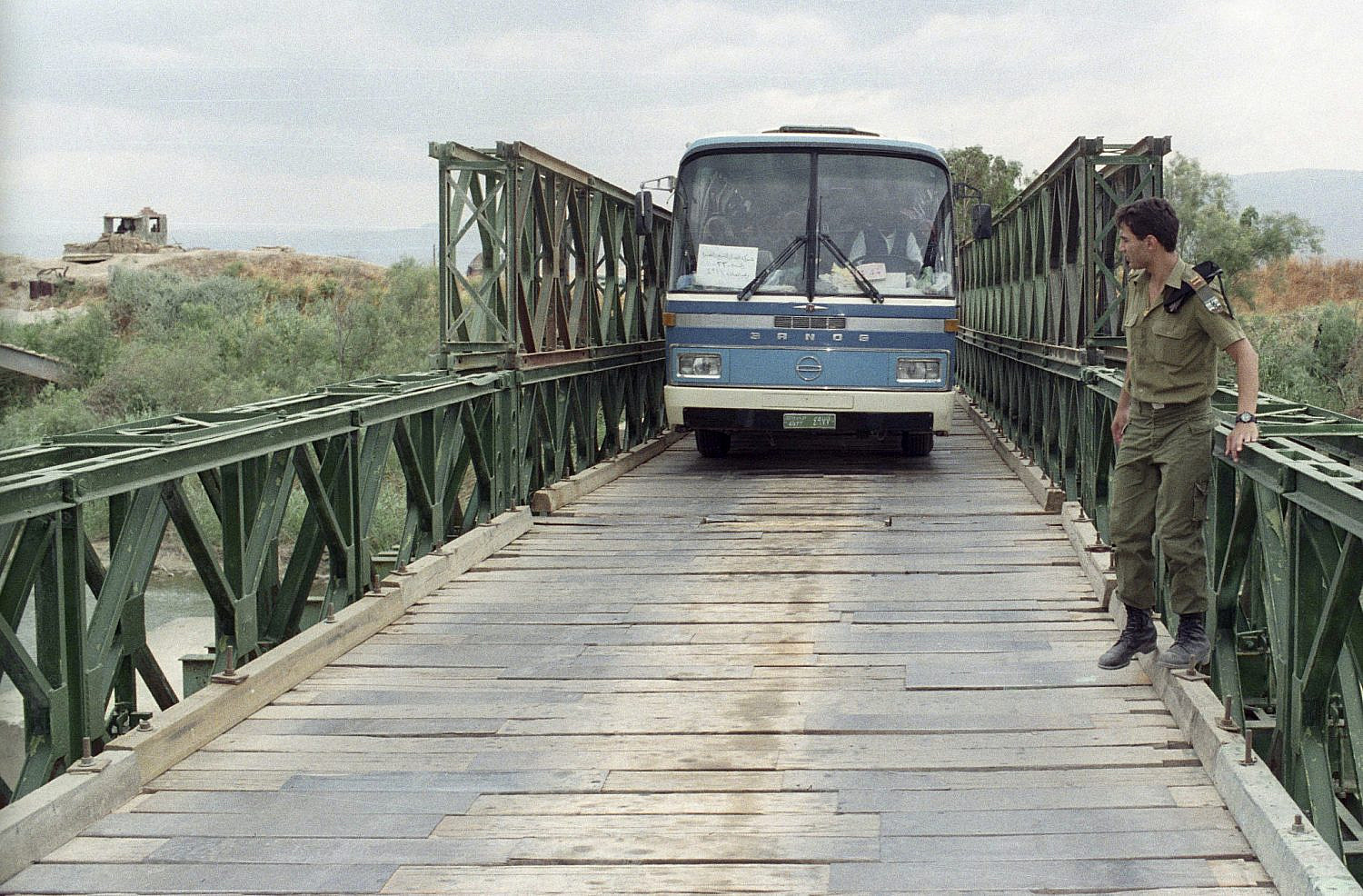The Erez Crossing into Gaza brought back memories of how, from Allenby to Qalandiya, Israel is constantly redesigning its structures of domination.

Palestinians walk through the kilometer-long caged terminal through the “no-go zone” between Israel’s Erez Crossing and Beit Hanoun, Gaza Strip,
I was stunned by the Erez crossing, the Israeli-controlled checkpoint that leads into the occupied Gaza Strip. The expanse of bullet-proof glass all around me, as I passed through the checkpoint on a recent trip, made me think of the stock exchange rooms seen on TV. The interior of the checkpoint’s grand new building is minimalist, empty of almost everything except for surveillance cameras, gates operated from the inside, and armed security guards scattered around.
Walking into the terminal, Palestinians are immediately separated from foreign nationals. Luggage is monitored on a scanner, and travellers’ documents are checked; I placed my COGAT-issued magnetic card on the electronic reader, stared into the iris scanner, and was allowed to pass.
I followed paper signs reading “To Gaza” that hung on the bare walls. I found myself walking down a long corridor that told merciless stories of other travellers: disposable medical supplies and a blood-stained gauze were strewn on the ground, alongside wheelchairs waiting to be pushed.ndows looming over my head, watching over the invasive body checks forcefully conducted on each traveller; men and women, young and old, were made to stand with their legs wide open, arms up, and hands near their ears while they were examined by a body scanner.
Once cleared, I waited on the other side to reunite with my luggage and my hand bag. It had been thoroughly searched, with my clothes and personal items, including my phone and tiny hand sanitizer, clearly taken out of the bags and hastily put back. This is where the enforcement of the list of items banned from entering Gaza, including toothpaste and shampoo, kicks in. It was why I made sure there was nothing other than clothes in my bag — no deodorant, sunscreen, or the chamomile tea bags I like to carry whenever I travel.

Palestinians arrive to cross into Gaza at the Erez Crossing between Israel and Gaza, September 3, 2015. (Yonatan Sindel/Flash90)
In addition to the Israeli inspectors at Erez, there are two other stops on the way into and out of Gaza: one run by the Fatah-led Palestinian Authority, called “5-5,” named after the code given to the coordination calls between the PA and Israelis at the crossing; and another one run by the Hamas authorities, which was given the name “4-4.” It was a surreal arrangement of facades to create the impression of control. It was also the first time I had come face-to-face with this element of the intra-Palestinian political division, which began in 2007 shortly after the last Palestinian general elections. I thought I knew all about this division, but seeing it at the crossing still slapped me in the face.
The table that exposes everything about us
As a millennial born in the 1980s, I saw in Erez the story of how much the Israeli checkpoint, this structure of domination, has evolved over the years. The maze of short doors, watched and controlled by hawk eyes hiding behind glass windows, reminded me of the corridors of Allenby Bridge, the crossing between Jordan and the occupied West Bank. They were more like tunnels for short children, with orange doors and curtains concealing tiny waiting rooms.
Every summer as a child, while my family lived in exile by choice — my late father, though, was exiled by force — we would travel from Sharjah in the United Arab Emirates to Amman in Jordan, then on to Jericho in the West Bank. This yearly tradition created a trail of memories, merging the airport security procedures with the matrix of security checks in those orange tunnels at Allenby.
My friends and family, including my mother — who almost single-handedly orchestrated these trips — still have strong memories of passing through those crossings in the 1980s. They told me how, after their passports or IDs were checked by soldiers, Palestinians were sent off to a waiting area where their shoes were taken away for inspection. Their luggage was emptied and scoured on a revolving belt. Then, one by one, travellers were strip-searched in separate rooms. In a third waiting room, a soldier brought the now-inspected shoes in a plastic box, throwing them into a pile of other shoes for travellers to search on their own.

A bus crosses the Allenby Bridge / King Hussein Bridge which connects Jericho in the West Bank to Jordan. (Flash90)
I, too, have many childhood recollections of those checkpoints. I remember being just tall enough to peer over the top of the inspection table on which our belongings were spilled out and hand-searched, while also being able to easily see underneath it. I remember stretching out my hand to grab the coloring pens that the soldiers threw into a plastic box on the ground, which meant we could take them along.
I remember how a marathon t-shirt bearing the Palestinian flag sparked a panic among the soldiers as they searched through our clothes. I remember the sadness on my mother’s face when a jar of honey prepared by my uncle was confiscated and thrown into a basket underneath the table — that table which exposed everything about us Palestinians, from our cherished gifts to our underwear.
More …



